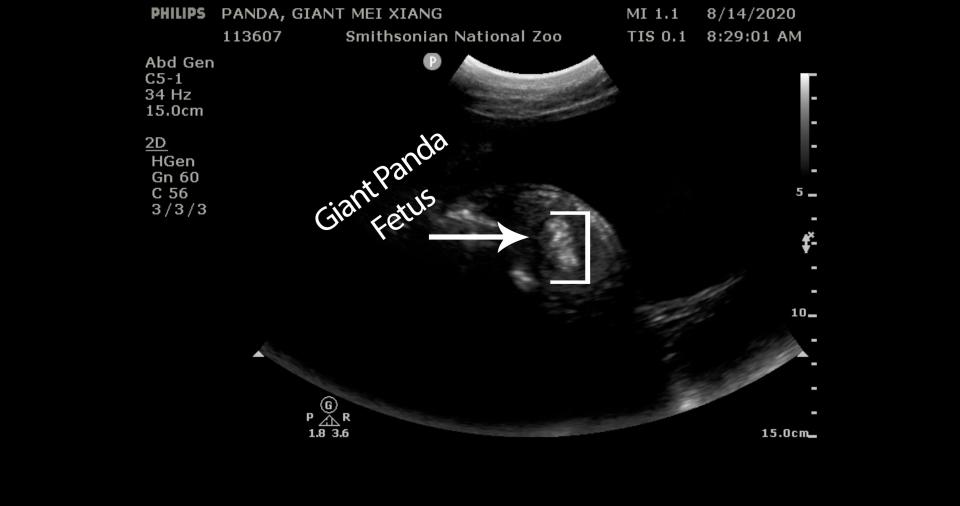A giant panda at the National Zoo is about to give birth. Watch for these signs of labor on the 'panda cam'
Zookeepers in Washington are holding their breath as the pandemic panda pregnancy watch continues.
Mei Xiang, the 22-year-old matriarch of the Smithsonian's National Zoo panda program, is pregnant and could give birth any day, zoo officials say.
"The staff is excited and a bit impatient (in a good way) for Mei Xiang to give birth," Bryan Amaral, senior curator for animal care sciences at the zoo, wrote in an email to USA TODAY.
While the zoo is remaining hopeful, there are still risks to her pregnancy: Mei Xiang would be the oldest giant panda to successfully give birth in the United States, and stillbirths and miscarriages are not uncommon for pandas.
Here's what you need to know:
How can I watch panda Mei Xiang during her pregnancy?
The National Zoo maintains two separate panda cams to keep an eye on the bears in their exhibit: Mei Xiang and her male counterpart Tian Tian. Viewers can stream them 24/7 here on the zoo's website. Zoo spokeswoman Pamela Baker-Masson said the zoo intends to stream the cameras through the birth.
While the zoo has partially reopened its outside areas to visitors amid an easing of coronavirus-related restrictions, its indoor exhibits are closed, including the panda enclosure. Mei Xiang does have access to an outside portion of the panda exhibit, but she's mostly stayed inside in recent days as she sleeps and nest builds, the zoo says.
Mei Xiang's cub says goodbye: Why Bei Bei leaving the National Zoo hit so hard for so many
What are the signs that Mei Xiang is in labor? And how will we know the cub is in good health?
Pandas do give some clues that they're about to give birth, "some more subtle than others," Amaral noted.
Amaral said restlessness is often observed as well as general straining from the animal. The panda may lick below her tail for a prolonged period, he added.
When Mei Xiang gave birth in the past, she exhibited similar behaviors. In August 2015, shortly before she gave birth, the zoo wrote in a Facebook post, "Our panda team believes Mei Xiang is in labor! She is restless, having contractions, body licking and remains in her den."
After the cub is born, expect Mei Xiang to care for it attentively, as she's done for her past cubs, Amaral said.
"Signs of a healthy cub are vigorous calling (panda cubs are rather noisy), observed nursing, appropriate urination/defecation, meeting of established milestones (eyes opening, becoming ambulatory), and most importantly, steady weight gain," he added.
For how long has Mei Xiang been pregnant?
The zoo announced the pregnancy on Friday after veterinarians performed an ultrasound and confirmed fetal tissue.
Video of another ultrasound performed Monday shows the fetus "kicking and swimming in the amniotic fluid," the zoo wrote in an Instagram post.

More on Mei Xiang's pregnancy: Giant panda could give birth this week at Washington’s National Zoo
In March, Mei Xiang was artificially inseminated with sperm from Tian Tian. However, pandas "experience a phenomenon referred to as delayed implantation," the zoo said in a statement.
That means an embryo may not attach to the panda's uterine wall for weeks or months, and once it does, it grows exponentially, the zoo says.
What are the risks Mei Xiang's pregnancy faces?
While zookeepers are excited about the prospects of a new cub, they're also cautious.
It's possible that Mei Xiang resorbs the fetus, a phenomenon that can be common among pandas. Amaral said, however, that Mei Xiang is in good health and has had positive results as a mother in the past.
Baker-Masson also told the Associated Press that Mei Xiang's pregnancy is far enough along and the fetus is well developed enough that it would be rare for resorption to occur. A miscarriage or stillbirth is still possible, though.
Further complicating matters is Mei Xiang's age. At 22, she would be the oldest giant panda to successfully give birth in the United States. The oldest in the world was 23.
Mei Xiang has given birth to three cubs that have survived beyond a few days: Tai Shan, Bao Bao and Bei Bei, all of which are now in China. Three of Mei Xiang's cubs were either stillborn or died shortly after birth.
If the birth is successful, will the cub be sent to China, too?
Yes. As part of an agreement with Chinese wildlife officials, all cubs born at the zoo leave at age 4.
Giant pandas have been in the nation's capital since 1972, after former President Richard Nixon visited China that year on a diplomatic trip.
According to the National Zoo, first lady Patricia Nixon told Chinese Premier Zhou Enlai she liked the animals, to which he responded, "I'll give you some."
Ling-Ling and Hsing-Hsing arrived that April and lived at the zoo for 20 years. However, they never produced cubs that survived, and both died in the 1990s.
In 2000, Mei Xiang and Tian Tian came to the zoo. The agreement for them to remain in Washington remains only through the end of the year.
The breeding program has largely been heralded as a success. For decades, the species was considered "endangered" and only recently was recategorized as "vulnerable" by the IUCN Red List of Threatened Species.
Contributing: The Associated Press. Follow USA TODAY's Ryan Miller on Twitter @RyanW_Miller
This article originally appeared on USA TODAY: Live panda cam shows pregnant Mei Xiang at National Zoo: How to watch

